(Last updated on 13/10/2025)
Travel planning can be either an enjoyable activity or a chore, depending on the type of traveller you are. I am of the opinion that excessive planning takes the fun out of travelling and leaves no room for flexibility, but a total lack of planning will likely result in disappointment and missing out on essentials. So, I think that, in any case, a basic level of planning is needed.
In this article, aimed at independent travellers at the trip planning stage, I share some useful practical information to consider when planning (a bit, but not too much) your trip to Mérida.
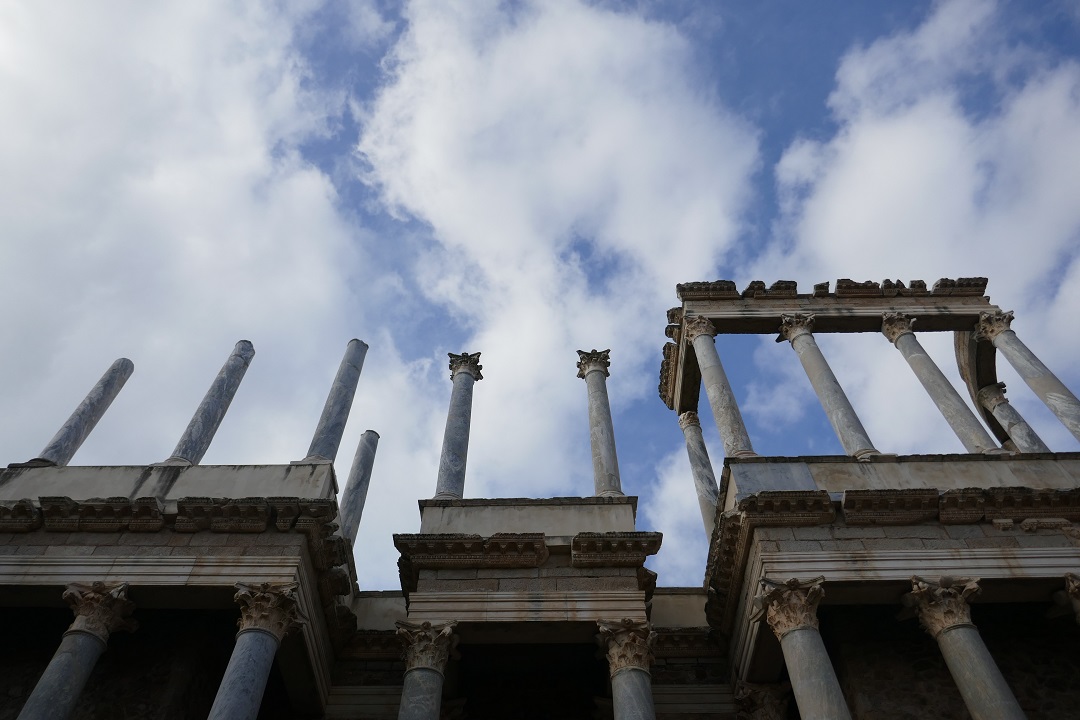
Bear in mind that there might be temporary and last-minute changes to the prices and opening times stated below, and that I may not always be aware of them immediately. I aim to keep this article as up-to-date as possible and it will be reviewed and updated at least annually. But always double-check any important details with the local authorities before your trip.
Getting to Mérida
Mérida can be easily reached by car from Madrid, Seville and Lisbon, and also from other main Extremadura destinations such as Cáceres and Badajoz. The roads are good, well maintained and (generally) not too busy, compared to those in other parts of Spain.
You can also get to Mérida by train and coach from outside Extremadura. If you’re planning a trip to Mérida from Madrid or Seville, read my articles below to decide which mode of transportation will suit you best:
Mérida Train Station is located in Calle Cardero, in the city centre, just over 10 minutes away on foot from the Roman Theatre.
Mérida Bus Station is located in Avenida La Libertad, s/n (west of the river Guadiana), about 15 minutes away on foot from the city centre. As of my last visit, the ticket offices and luggage storage facilities are open daily from 8m to 8pm.
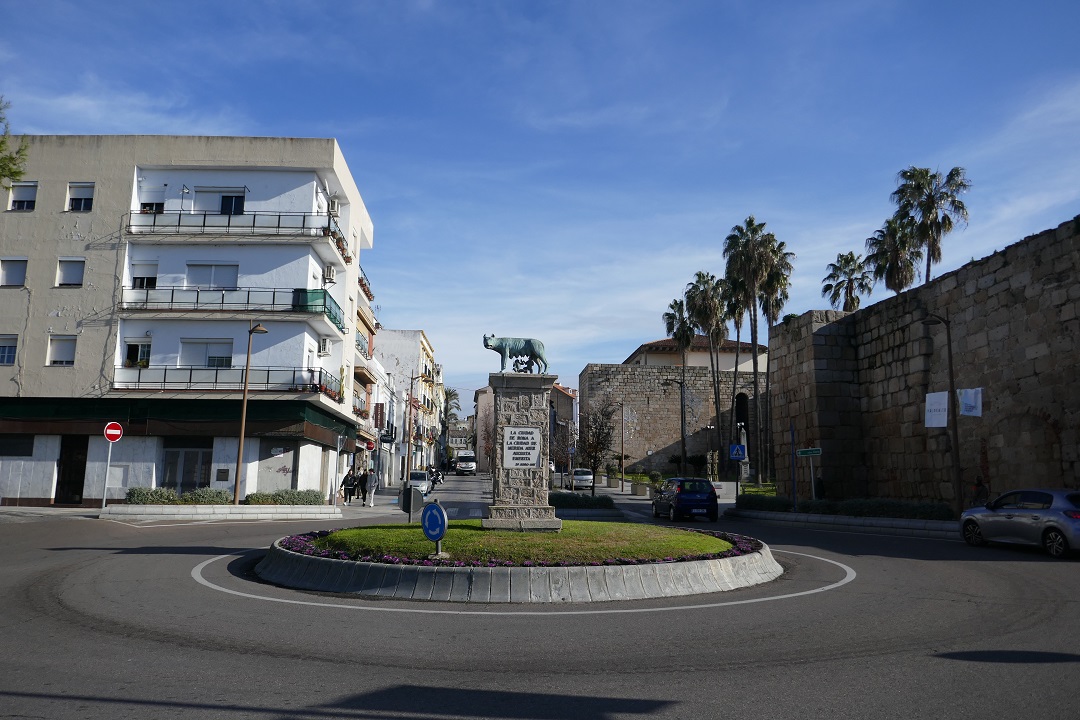
Getting around Mérida
Everything of interest (monuments and sights, squares, hotels, etc.) is located to the east of the river Guadiana. The city centre is compact, flat and walkable, so you will not need to use public transport at all. In fact, local buses do not go into the city centre, but around it.
If, by any chance, you need to use public transport, you can download the app for local buses below:
Parking in Mérida
If you’re staying overnight in Mérida, you might want to leave your car in a secured car park. A centrally-located one I have used in the past is Aparcamiento Cervantes, located in Travesía Cervantes (about 10 minutes on foot from the Roman Theatre).
If you’re visiting Mérida for the day and would rather save the car park fee, you can find free on-street parking spaces just outside the historic centre. For example, my go-to area for free on-street parking is the vicinity of the Casa del Mitreo.
When to go to Mérida
Many travellers planning to visit Extremadura worry about the heat. Finding Mérida too hot will depend on where you’re coming from and the type of weather you’re used to.
For example, I was used to the very dry, very hot Extremadura summers until spending some four or five full years abroad. As a long-term UK resident, I now struggle, not only with the forty plus degrees in July, but also with the thirty-five plus degrees from early June to mid-September.
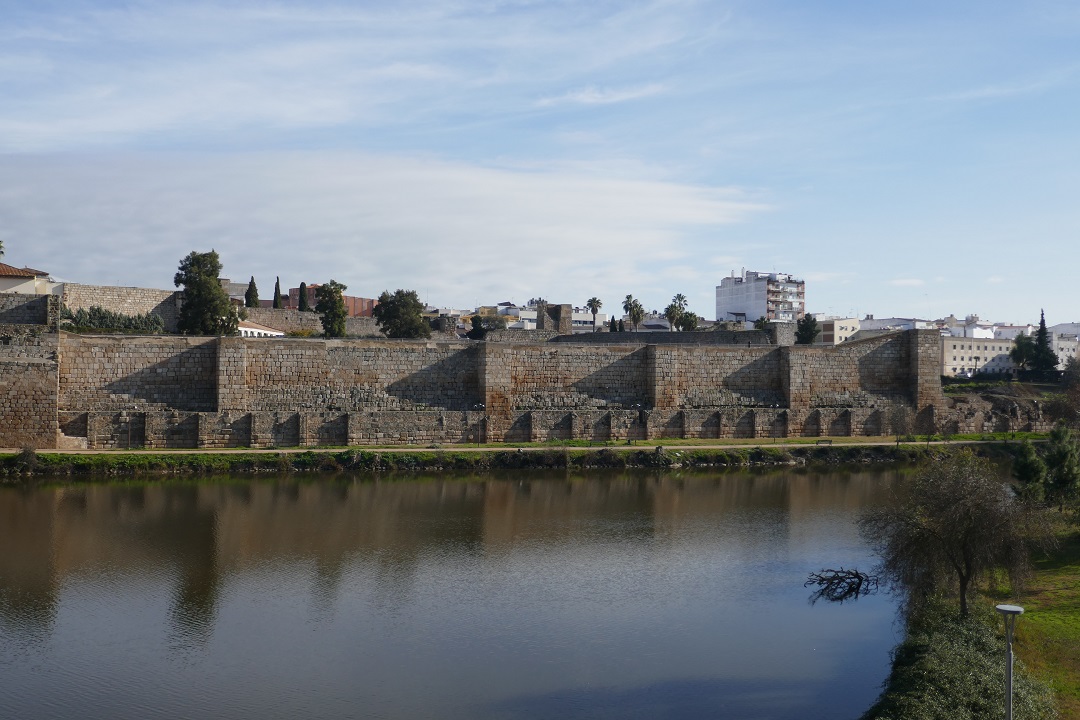
Visiting Mérida involves a lot of walking outdoors and being exposed to the sun, so perhaps summer is not the best season to go, if you are concerned about the heat. It’s also high tourist season, where the city receives the largest number of visitors (particularly during its Classic Theatre Festival), and it can feel a bit too busy. Easter is also a busy time with domestic long-weekenders.
January is probably the quietest month in terms of tourism. The city starts going back to normal after the end of the Christmas celebrations (on 6 January). Although sights close a bit earlier in winter (details below), it can still be nice and sunny.
October is probably my favourite month to visit central Extremadura in general and Mérida in particular. It’s shoulder season, so it’s not as busy as it is in July-August. The weather is perfect – bright, sunny and warm, but not overly hot. You can expect maximum temperatures of 20-25 in October.
Every season has pros and cons for visiting a place. Your best time to go to Mérida will depend on your personal circumstances and preferences, so start planning your trip by listing your priorities and that will help you decide when to go.
How long to stay in Mérida
Mérida is a small city, with a population of under 60,000. While most sights are located within its compact historic centre, seeing them all involves a lot of walking. Visiting all the Roman remains (excluding the National Museum of Roman Art) takes one and a half days of very intense sightseeing. If you are keen on sights and don’t like rushing, even if you don’t plan to see everything and are selective about the sights, I would recommend spending two full days in Mérida.
My experience: I attempted and failed to see all these Roman remains in a day (11am to 6.30pm). I managed to see sights 1-8, and 13-18. I was on my own, walking fast from sight to sight, barely stopping for lunch, and I made it to the last sight just before closing time. It was exhausting.
Tourist Information Centres
The local tourism authority (Turismo de Mérida) should be the first and best point of contact for practical tourist information about Mérida. You can reach them by email ([email protected]) before your trip, or you can pop by one of its two centrally located tourist information centres, when you get there.
Oficina de Turismo Teatro Romano
The main tourist information centre is located very close to the National Museum of Roman Art and the Roman Theatre, so you cannot miss it. Please note that on weekends, the centre closes during the central hours of the day.
Address: Plaza Margarita Xirgú s/n
Opening hours: (from 1 April to 30 September) Monday-Friday from 9am to 8.30pm, Saturday-Sunday from 10am to 2pm and from 5.30pm to 8.30pm; (from 1 October to 31 March) Monday-Friday from 9am to 6.30pm, Saturday-Sunday from 9am to 2pm and from 4.30pm to 6.30pm.
Phone: +34 924 330 722
Oficina de Turismo Puerta de la Villa
You’ll find the other tourist information centre on a busy pedestrianised shopping street leading to one of the main squares (Plaza de España). Please note that this centre closes at 3pm every day.
Address: Calle Santa Eulalia, 62
Opening hours: (from 1 April to 30 September) Monday-Sunday from 9am to 3pm; (from 1 October to 31 March) Monday-Sunday from 9am to 3pm;
Phone: +34 924 381 191
Main sights in Mérida – Conjunto Histórico-Arqueológico
• Teatro y Anfiteatro Romanos
• Circo Romano
• Alcazaba Árabe
• Conjunto Arqueológico de Morería
• Cripta de la Basílica de Santa Eulalia
• Casa del Mitreo-Columbarios
• Casa del Anfiteatro
• Centro de Interpretación Templo de Diana
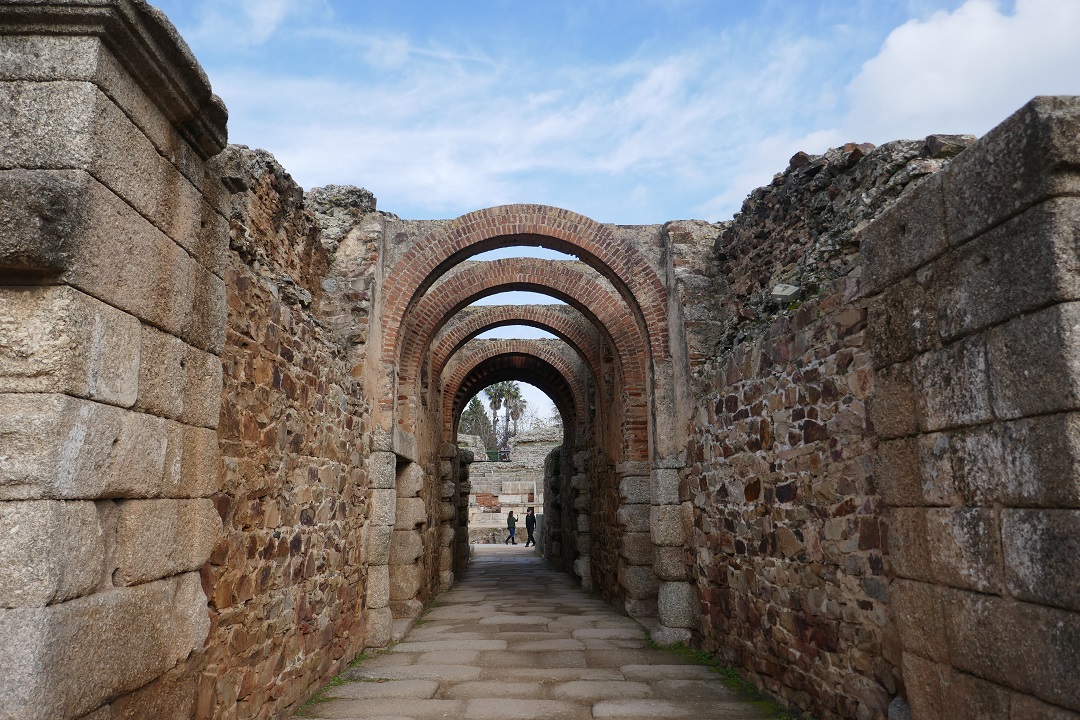
Tickets and prices
Tickets can be purchased online. The Roman Theatre and Amphitheatre can be visited with a €13.50 combined ticket. The other sights can be visited separately (at €6.20 each).
Alternatively, you can visit all sights with a €17.50 Conjunto Monumental combined ticket. Combined tickets allow you to visit the sights on different days. Reduced rate available for young people, students, over 65s, retirees, large families and disable persons available. Local residents and children under 12 go free.
Addresses and opening hours
| Sight | Location | Summer opening times (1 Apr-30 Sep) | Winter opening times (1 Oct-31 Mar) |
| Teatro Romano | Plaza Margarita Xirgú, s/n | Mon-Sun from 9am to 9pm | Mon-Sun from 9am to 6.30pm |
| Anfiteatro Romano | Plaza Margarita Xirgú, s/n | Mon-Sun from 9am to 9pm | Mon-Sun from 9am to 6.30pm |
| Circo Romano | Avenida de Juan Carlos I, s/n | Mon-Sun from 9am to 9pm | Mon-Sun from 9am to 6.30pm |
| Alcazaba Árabe | Mon-Sun from 9am to 9pm | Mon-Sun from 9am to 6.30pm | |
| Conjunto Arqueológico de Morería | Paseo de Roma, s/n | Mon-Sun from 9am to 3pm | Mon-Sun from 9am to 3pm |
| Cripta de la Basílica de Santa Eulalia | Avenida de Extremadura, s/n | Mon-Sun from 9am to 3pm | Mon-Sun from 9am to 3pm |
| Casa del Mitreo-Columbarios | Calle Oviedo, s/n | Mon-Sun from 9am to 9pm | Mon-Sun from 9am to 6.30pm |
| Casa del Anfiteatro | Plaza Margarita Xirgú, s/n | Mon-Sun from 9am to 9pm | Mon-Sun from 9am to 6.30pm |
| Centro de Interpretación Templo de Diana | Calle Santa Julia, s/n | Mon-Sun from 10am to 9pm | Mon-Sun from 11am to 2pm, and from 4.30pm to 6:30pm |
Closures
The main sights above are closed on 25 December, 1 January and 6 January. On 24 and 31 December, they open from 10am to 3pm only.
Museums in Mérida
Museo Nacional de Arte Romano
The National Museum of Roman Art is an unmissable sight in Mérida. If you’re visiting Mérida only for a day, make sure it’s not a Monday, when the museum is closed.
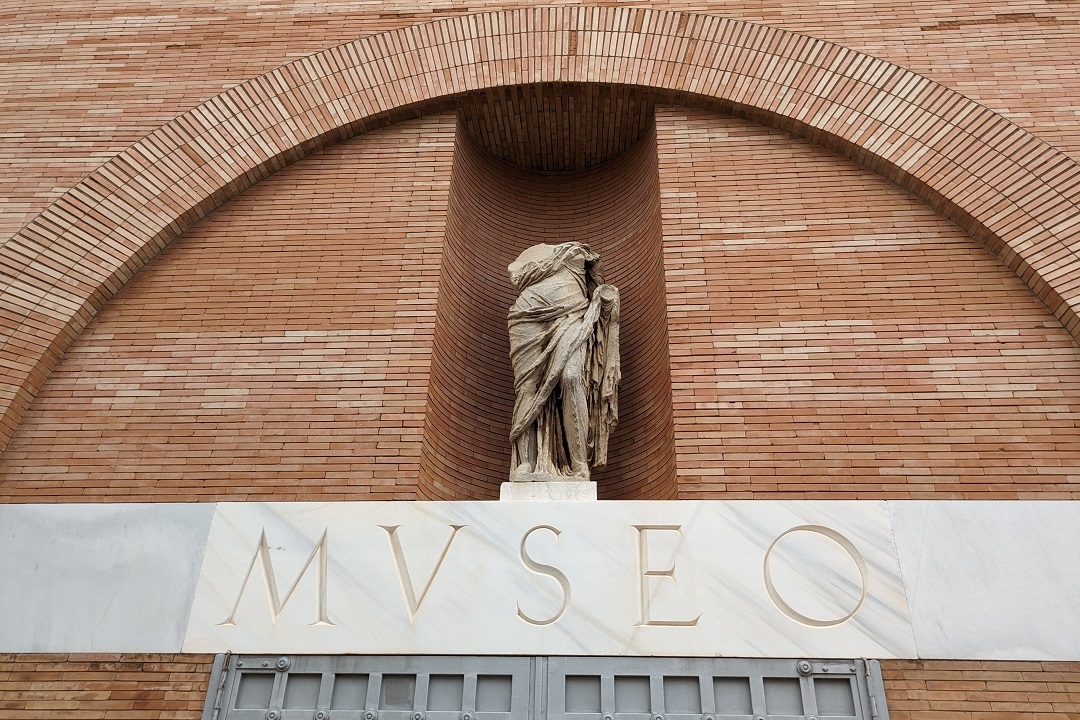
Address: Calle José Ramón Mélida, s/n
Opening hours: (from 1 October to 31 March) Tuesday-Saturday from 9.30am to 6.30pm and Sundays (and Holidays) from 10am to 3pm; (from 1 April to 30 September) Tuesday-Saturday from 9.30am to 8pm and Sundays (and Holidays) from 10am to 3pm. Mondays closed.
Tickets: €3 for general admission. Tickets can be booked online; however, you still need show your email booking confirmation and pay for your ticket at the museum.
Free admission: Saturdays from 2pm, Sundays until 3pm, 18 April, 18 May, 12 October, 6 December.
Social media: (Facebook) @MuseoNacionaldeArteRomano; (Instagram) @museonacionaldearteromano
MUMCO project
MUMCO refers to Mérida Museum of Contemporary Muralism, a street art project comprising eight murals by Spanish international urban artist located in La Antigua neighbourhood.
All murals are located in a small area just off Avenida de Juan Carlos I, near the Roman Circus, reachable on foot from the historic centre.
Recommended read:
This content is protected by copyright and belongs exclusively to Irene Corchado Resmella. To know exactly what this means, read the 'Copyright' section in the Website terms of use.

Irene Corchado Resmella
Hi! I’m Irene (/ee-REH-neh/). Long since settled in the UK, I explore my Spanish home region of Extremadura with an inquisitive mind, a sharp eye, and the duality that comes with being both a local and a visitor. Then I write about it here to help you discover this beautiful yet overlooked part of Spain. If you have any questions after reading this article, submit a comment below! Read more about me.
